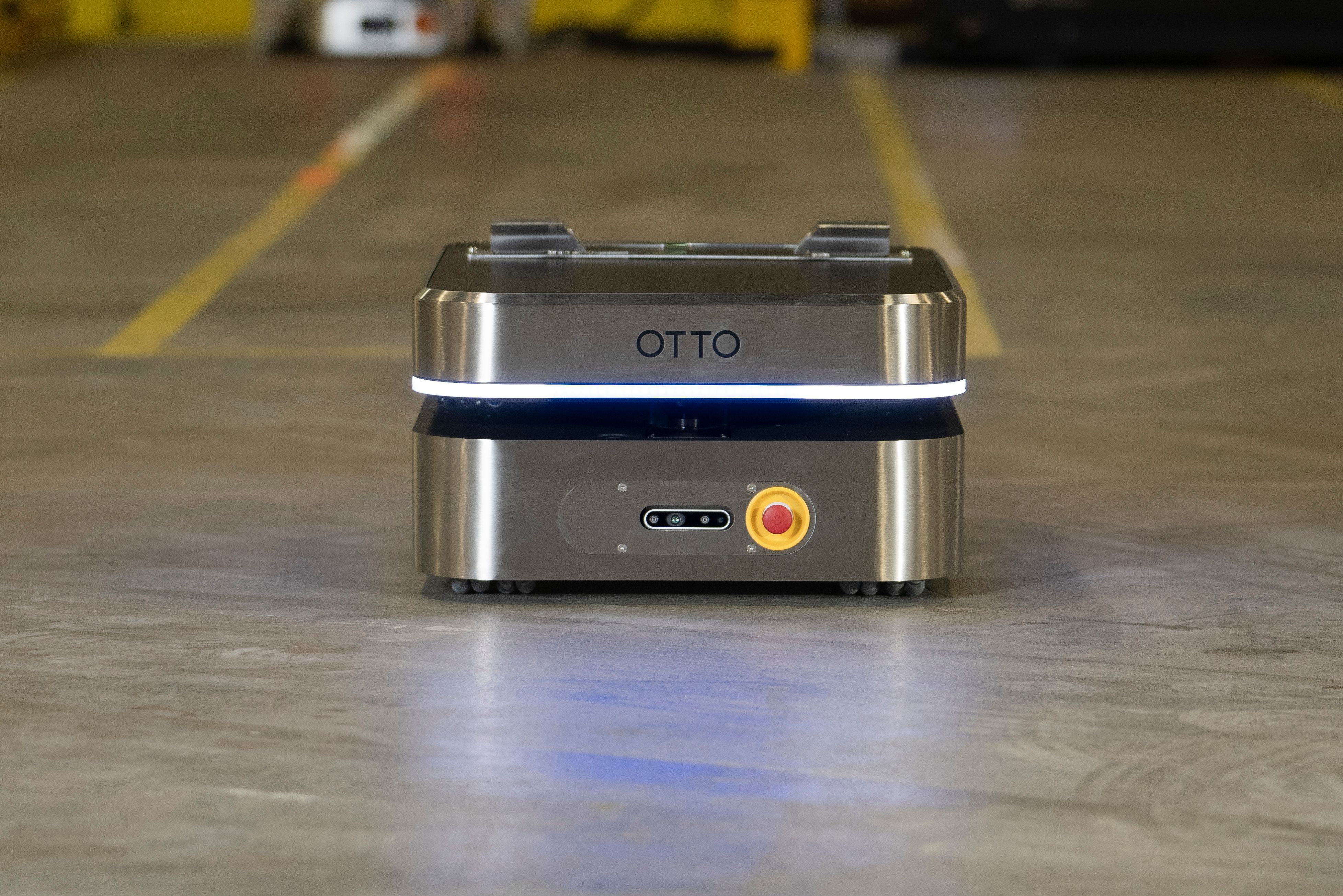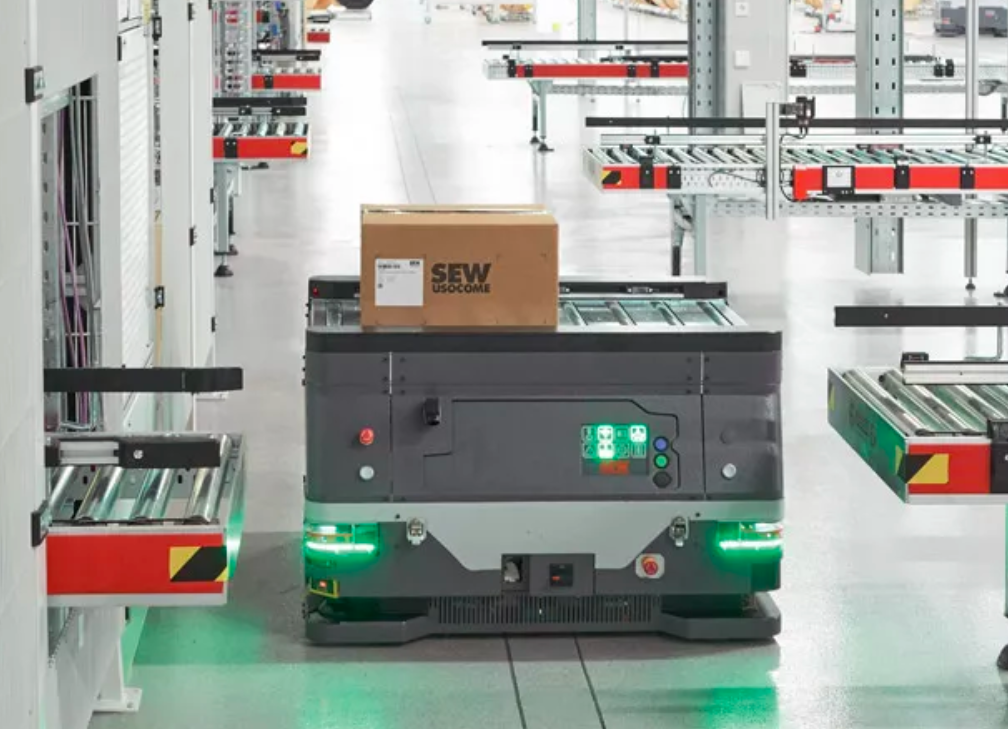Blog
AGV vs AMR: A comparison of automated material transport

From automated to autonomous: What’s the difference?
The words automated and autonomous are easily confused and often interchanged, but their meaning is inherently different.
Automated: Computer-controlled machines that can perform a set of defined tasks by following specific instructions with minimal or no human intervention.
Autonomous: Machines that have the intelligence to make decisions when faced with new or unexpected situations. These machines may have the ability to learn as they encounter new situations.
AGV vs AMR
Automated Guided Vehicles (AGVs) and Autonomous Mobile Robots (AMRs) are also often confused. Each system operates with fundamentally different technology, from perception and navigation software to onboard sensors. Therefore, they have different capabilities and potential applications.
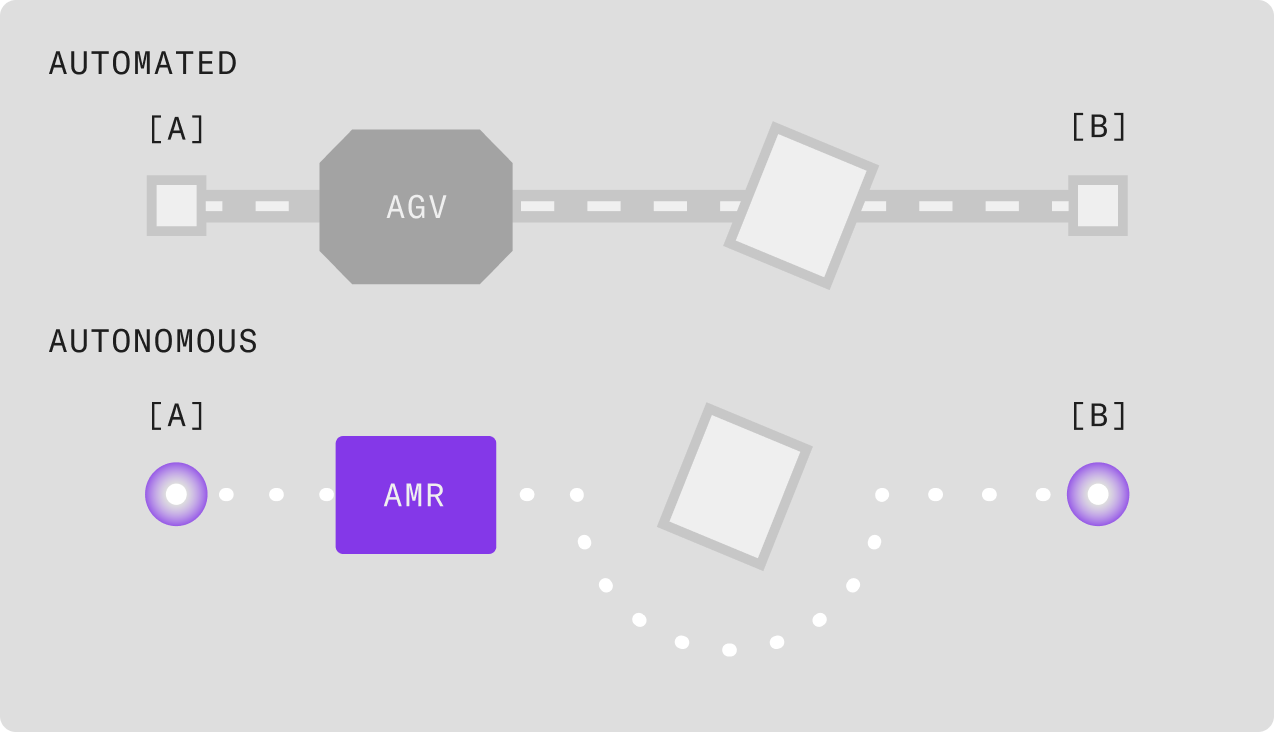
Automated guided vehicle (AGV): An AGV is an unmanned electric vehicle that is controlled by pre-programmed software to move materials around a facility. AGVs1rely on guidance devices such as magnetic tape, beacons, barcodes or predefined laser paths that allow the AGV to travel on fixed paths in a controlled space. Lasers and sensors detect obstacles in its path and trigger the vehicle to stop automatically2.
Autonomous mobile robot (AMR): An AMR is a robot in which operation occurs without direct driver input or pre-configured scripts to control the steering, acceleration, and braking3. Within an industrial environment, an AMR utilizes laser-based perception and navigation algorithms to dynamically move through facilities, infrastructure-free. Machine learning capabilities enable the robot to become more efficient and accurate as it encounters new situations.
The AMR: An evolution of the AGV
Automated material transport has experienced an evolution due to rapid advancement in sensors and big data capability. Autonomous next-generation solutions are disrupting conventional AGV technologies with 5 core advantages:
1. Flexible and versatile
AGV
AGVs are fixed. They follow predefined paths using lasers, beacons, barcodes or magnetic tape.
Impacts:
- Multiple AGV units are required for different applications.
- Ongoing infrastructure maintenance is required.
- Minor debris in the laser’s field of view prevents the vehicle from moving until obstacle is manually removed by human personnel.
AMR
AMRs do not require external infrastructure for navigation, making implementation hassle-free and highly scalable.
Impacts:
- One AMR unit can be used in multiple applications.
- Encourages 5S standards for clean aisleways throughout entire facility.
- AMRs detect, avoid, and dynamically move around obstacles to continue to destination, reducing downtime. Human interaction is not required.
- Parameters can be customized to navigate through aisleways, personnel zones, and narrow corridors.
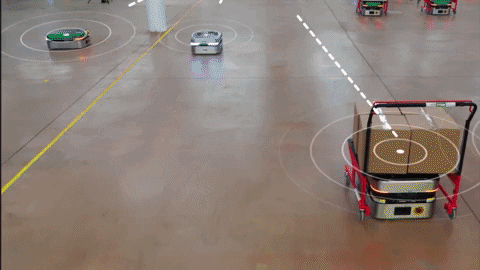
2. Easily scalable
AGV
AGVs can be added to facility if layout adheres to AGV infrastructure requirements.
Impacts:
- Resources are required for facility planning, infrastructure innovations, maintenance and line training.
- Facility layout must be designed to accommodate equipment.
AMR
Additional AMRs can be operational in <1 day as they operate from a centrally controlled map, shared among the fleet.
Impacts:
- Infrastructure renovations, facility planning, or additional training are not required.
- AMR customers do not need to outsource work to 3rd party vendors for changes or additional implementation.
3. Redeployable
AGV
Moving an AGV is equivalent to installing an AGV system for the first time - significant resources are required.
Impacts:
- Infrastructure is fixed. Changes are rigid and costly.
- Multiple systems are required in total, despite low/high seasonal periods.
AMR
AMRs can be redeployed from one plant to another, or to a different zone within the same plant. With a centrally controlled fleet manager, setup time is minimal and can be completed by the customer.
Impacts:
- Units can be shared among multiple facilities to alleviate seasonal demands.
- Throughput is increased in facilities or zones, that would otherwise be
underutilized assets from other facilities or zones that experience a downturn. - AMRs can become a shared resource; therefore, less units are required for purchase
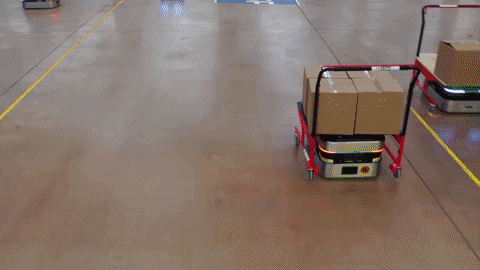
4. Intelligent
AGV
AGVs are not intelligent machines and do not facilitate industry’s vision of the ‘smart factory'4. Due to infrastructure, intelligence is not required.
Impacts:
- Due to lack of data collection, plant operators do not have insight into real-time KPIs or vehicle performance.
- Standard stack lights and sounds are unchanging, despite changes in environment.
- AGVs are unable to back up or take alternate routes.
- AGVs cannot easily integrate with other solutions.
AMR
Onboard intelligence enables AMRs to adapt to changing environments and easily integrate with other solutions (including ERPs). Machine learning collects data and updates the fleet’s shared map with learned parameters.
Impacts:
- AMRs learn which routes are the fastest and take optimal paths, even within unpredictable environments.
- Plant personnel can safely and collaboratively interact with AMRs.
- AMRs offer integrated lights and sounds that resemble outdoor automobiles to intuitively indicate behaviors to plant personnel.
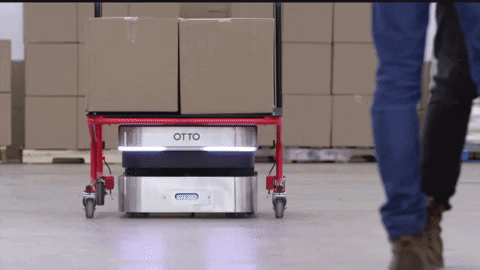
5. Usability
AGV
AGVs are designed to do simple tasks, yet setup and operation is cumbersome, complex, and costly.
Impacts:
- AGVs require trained expertise by certified personnel or engineers.
- Changes to the system require facility infrastructure updates and additional staff training.
AMR
Implementation includes mapping facility once with a robot then setting up zones and points of interest on the map in the fleet manager.
Impacts:
- System is set up by the customer and is done so with a point and click interface.
- Updates to robot or access zones can be made by plant personnel.
- Changes in production lines or distribution layouts are easily implemented.
Sources
1 Modern Materials Handling, “Automation: What is an AGV,” June 2011. http://www.mmh.com/article/aut...
2 Modern Materials Handling, “Casters, Carts, and Tuggers: Reinventing the Wheel,” June 2016. http://www.mmh.com/article/cas...
3 Wall Street Journal, “Tesla CEO Musk Sees Fully Autonomous Car Ready in Five or Six Years,” http://www.wsj.com/articles/te...
4 Industry Week. “The Dawn of the Smart Factory” http://www.industryweek.com/te...






